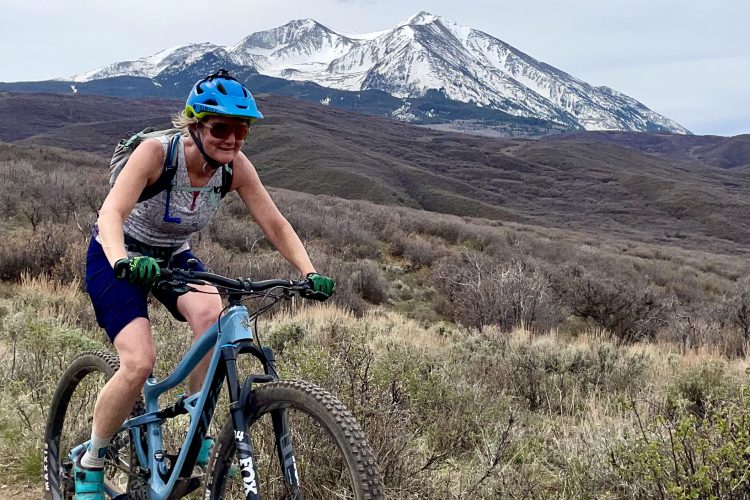
Once the weekly cancelations and rescheduled events were finally settled there was just one XC World Cup race slotted before the 2020 World Championships race in Leogang, Austria. The sole race in Nové Město, Czech Republic, would be the first World Cup of the season, setting an example in terms of pandemic safety requirements for the two double-header downhill rounds to follow. Racers from every continent had to find flights when and where they could, and seek federal travel approval to attend the event. While the organizers learned a great deal from those races, the 2021 season may face many similar challenges.
We recently contacted Jan Marcaník who has been organizing the Czech World Cup XC race every year for the past eleven, in addition to running a vacation trail-tour service called Czech MTB Holidays. Jan says that based on his experience with running the event in October there are three major challenges to overcome for the 2021 season. The first is helping athletes legally leave their countries and get to the race venue; then there’s the question of how to safely organize the venue so that everyone has as little contact with other people as possible; lastly there is educating and convincing everyone to follow the Covid guidelines so they prevent onsite viral spread as much as possible.
With a full year of planning those challenges should be manageable, as long as the targets don’t move as erratically this year as they did the last. For organizers, a World Cup XC people management game consists of roughly 500 athletes between the six categories, and with all of their support staff, that number swells to over 800 people in one bubble. Media staff constitutes a second contained bubble of roughly 150 people who all need to be quarantined and kept away from the athletes. Finally, the third group of 15,000+ fans is typically in attendance for the Czech round of a normal World Cup series.
Up until a fortnight prior to the race this fall Jan and the Czech event team were still planning to allow spectators in a limited and confined area, but the spacial and logistical restrictions just didn’t add up. The only spectators of the race were directly involved with the event, or watching from the comfort of our homes.
Jan wants to share a message with all of the event promoters out there that these logistical challenges are surmountable. He said that it required a lot of hours behind a desk, calling government health officials and taking international calls while out on bike rides, but it’s possible. “Even though it’s a lot of bureaucracy, and a lot of phone calls with authorities, I found out quickly that all of those authorities are people, and those people are also experiencing this situation for the very first time. Even though you’re calling because you don’t know what to do, they don’t know either. But it works out.”
And, while it clearly can work out, the pandemic restrictions for the 2020 event cost his team some additional funds in the ballpark of €20,000, whereas organizers of the following DH and XC World Championships shelled out an additional €50,000-60,000 to cover health and safety measures for their multi-day event.

Jan recounted one of the many instances of athletes calling him to sort out travel plans. “I was on my bike somewhere in Slovakia in mid-August and a guy from Mexico called me. There was barely any phone reception. I answered and the guy said ‘we’re in the airport in Mexico City. They don’t want to let us in the plane because we don’t have the right document. What should we do?’ There were many phone calls like this, and there were some tough situations that we had to solve in a few minutes’ time. In the end, everyone who wanted to participate was able to.”
Once all of the participants arrive, clear instructions are necessary so everyone knows how to safely navigate the facility. Some of the athletes, team staff, and media have been working the event in Nové Město for over ten years now, and they’re familiar with how things have always worked. The Czech event team had signs and maps and fences installed to keep groups separated, but it took a while for everyone to understand and follow the new rules. Jan said that after about three days everyone settled into the pandemic program, and all went according to plan from there.
The final hurdle to putting on a safe race in 2021 will be making sure all of the athletes can easily receive Covid testing and share their results, just as they do with regular drug tests. Jan and other World Cup promoters hope that the UCI will create a system to automate this process, then allow event organizers access so they can ensure that everyone has tested negative for the virus, or has received the vaccine. In 2020 the few organizers who managed to put on events had to manage Covid test results in addition to the rest of the race logistics, and they all agreed that a more efficient system is needed. We reached out to the UCI for more information too, but did not receive a reply.
The already shortened 2021 UCI MTB World Cup calendar includes the following events — at the moment. Don’t worry, according to our sources Mont Sainte Anne will be back for 2022.
- April 24-25: (DH) Maribor, Slovenia
- May 8-9: (XCO) Albstadt, Germany
- May 15-16: (XCO) Nové Město, Czech Republic
- May 22-23: (DH) Fort William, UK
- June 12-13: (DH/XCO) Leogang, Austria
- July 3-4: (DH/XCO) Les Gets, France
- August 24–29: UCI MTB World Championships – Val di Sole, Italy
- September 4-5: (DH/XCO) Lenzerheide, Switzerland
- September 18-19: (DH/XCO) Snowshoe, USA




















0 Comments